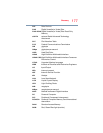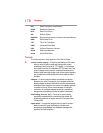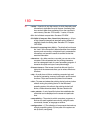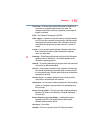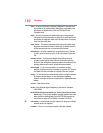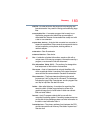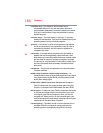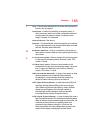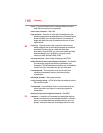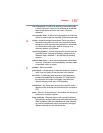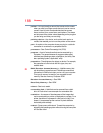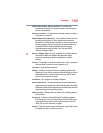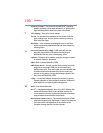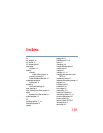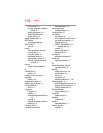
Glossary
185
I
icon—A small image displayed on the screen that represents a
function, file, or program.
interlaced—A method of refreshing a computer screen, in
which only every other line of pixels is refreshed. Interlaced
monitors take two passes to create a complete screen
image. Compare
non-interlaced
.
internal device—See
device
.
Internet—The decentralized, world-wide network of computers
that provides electronic mail, the World Wide Web, and other
services. See also
World Wide Web
.
K
keyboard shortcut—A key or combination of keys that you
use to perform a task instead of using a pointing device such
as a mouse.
L
L1 (level one) cache—Memory cache built into the processor
to help improve processing speed. See also
cache
,
CPU
cache
,
L2 cache
.
L2 (level two) cache—Memory cache installed on the
motherboard to help improve processing speed. It is slower
than L1 cache and faster than main memory. See also
cache
,
CPU cache
,
L1 cache
.
LAN (Local Area Network)—A group of computers or other
devices dispersed over a relatively limited area and
connected by a communications link that enables any
device to interact with any other on the network.
LED (Light Emitting Diode)—A solid state lamp (SSL) that
uses light-emitting diodes (LEDs) as the source of light,
which offers long life and high efficiency output. Multiple
diodes are used together, since the light created by
individual light-emitting diodes is small compared to
incandescent and compact fluorescent lamps.
LCD (Liquid Crystal Display)—A type of display that uses a
liquid substance between two transparent electrode panels.
When an electric current passes through the electrodes, the
molecules in the liquid form a crystalline pattern that
polarizes the light passing through it. A filter over the
electrodes permits only non-polarized light to pass to the
surface of the display, creating light and dark pixels.



